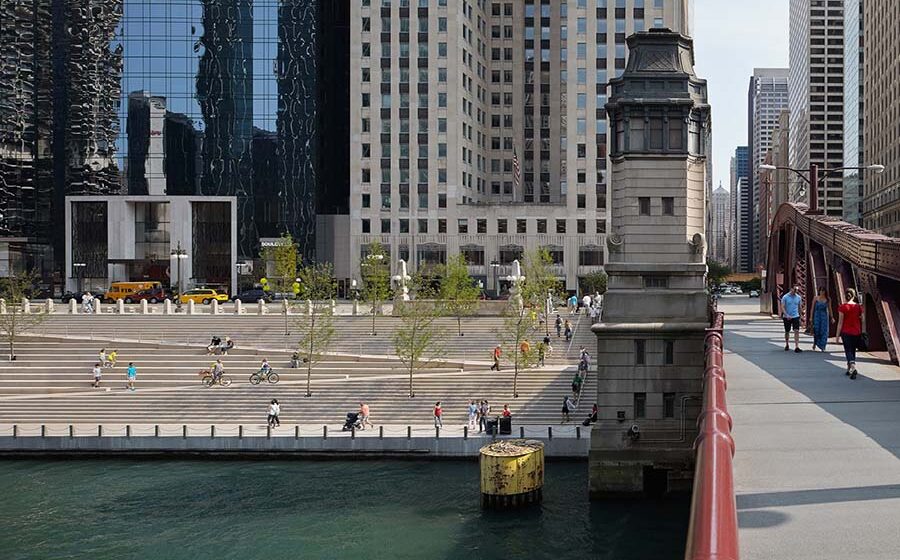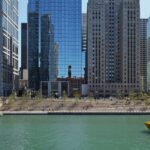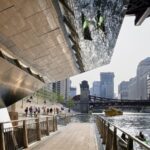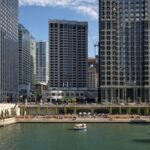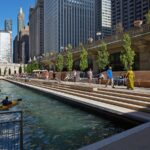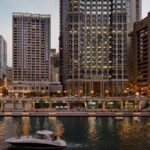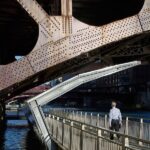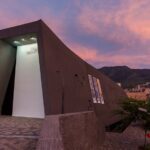The Chicago River has played a central role in the city’s development, evolving from a marshy stream to a key industrial artery. Today, the Chicago Riverwalk project, led by the Chicago Department of Transportation and Ross Barney Architects, aims to reclaim the river as a hub of ecological, recreational, and economic activity.
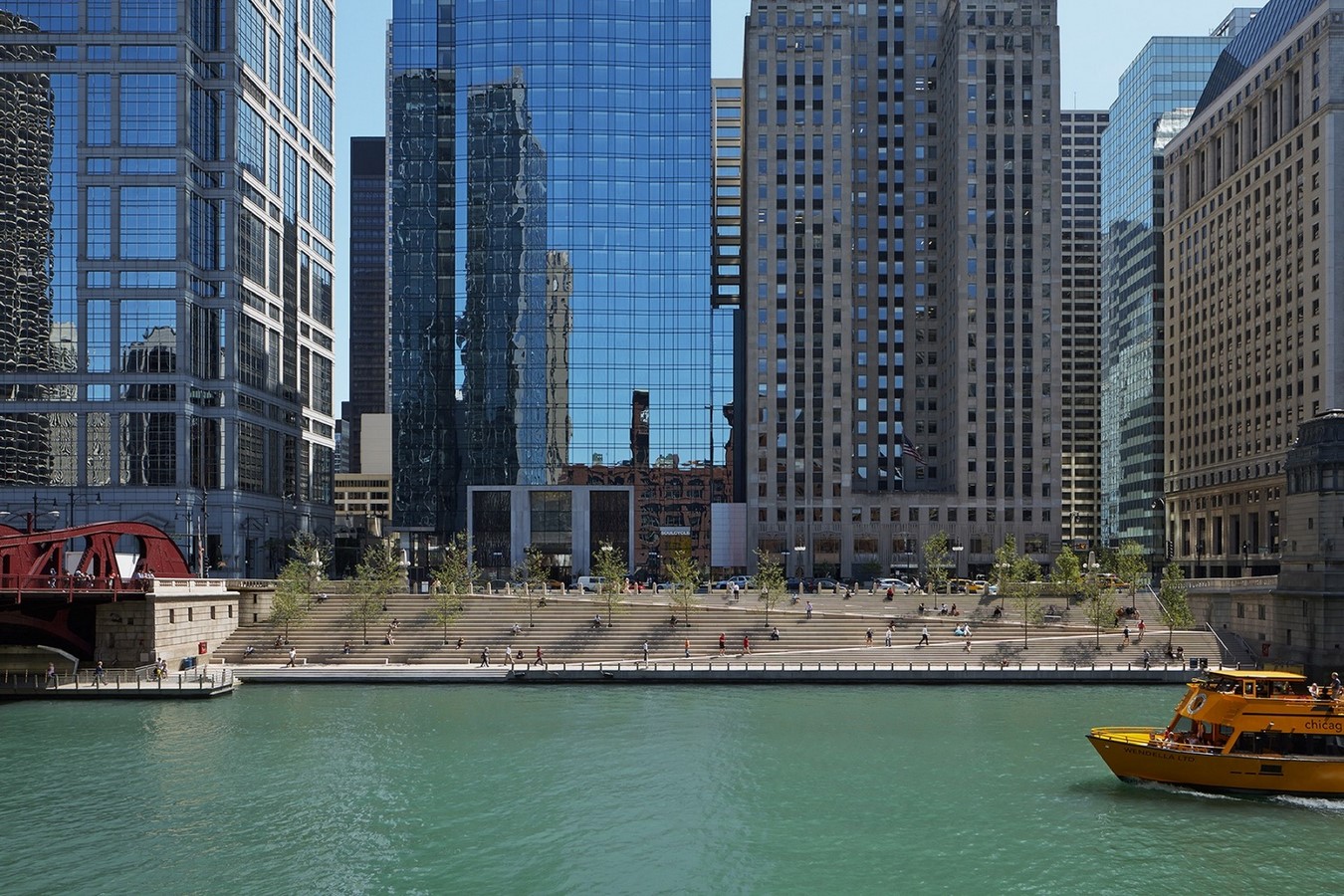
Historical Context and Development
The Chicago River’s transformation began with the reversal of its flow in the late 19th century, followed by Daniel Burnham’s vision for riverside promenades. Over the past decade, the focus has shifted to transforming the river into a recreational amenity, despite its previously high pollution levels.
Phase One: Veteran’s Memorial Plaza and Bridgehouse Museum Plaza
Phase One of the Riverwalk, completed under the leadership of Ross Barney Architects, introduced Veteran’s Memorial Plaza and the Bridgehouse Museum Plaza, marking the initial step towards enhancing public access along the river.
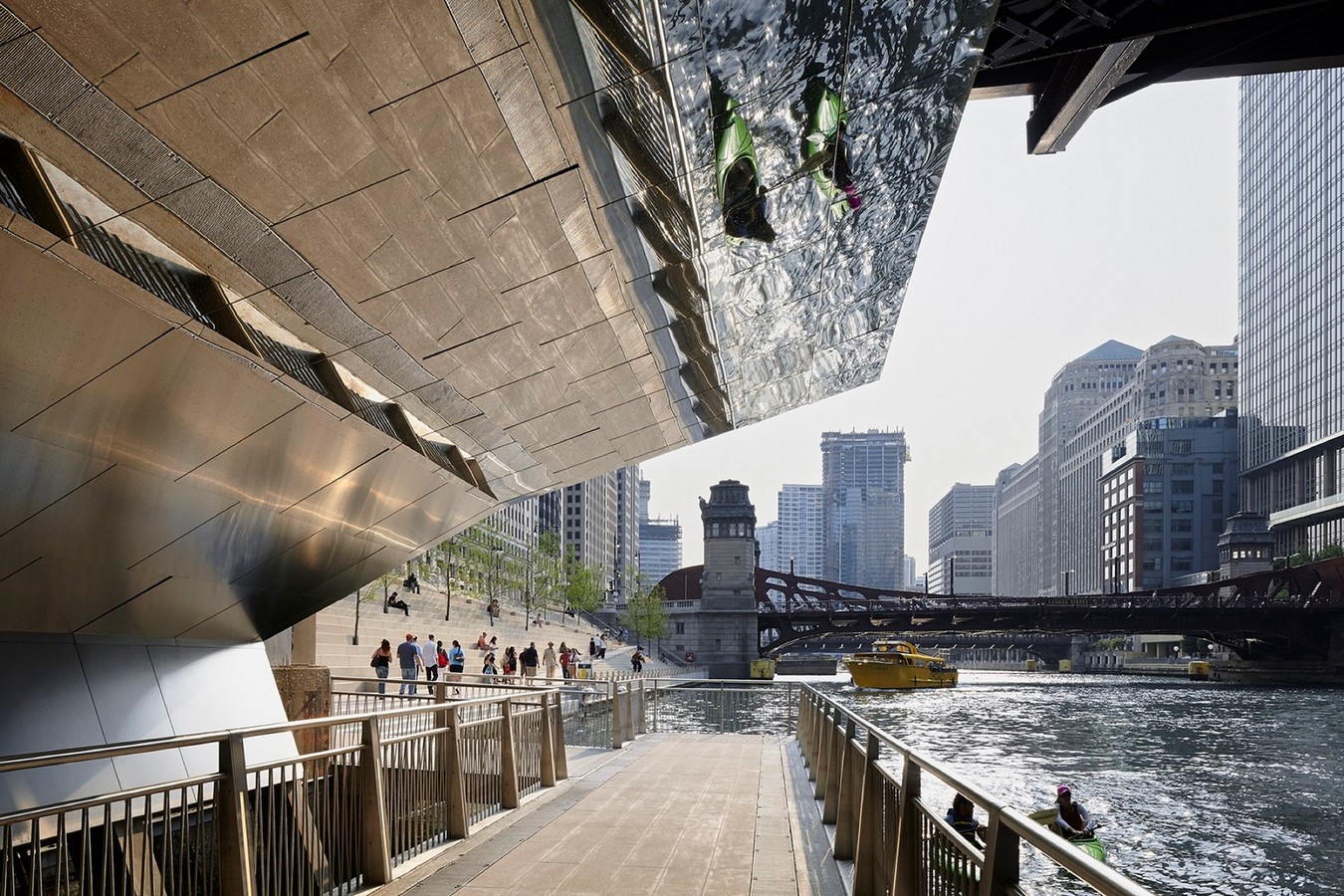
Phases Two and Three: State Street to Lake Street
In 2012, a collaborative team including Sasaki, Alfred Benesch Engineers, and Jacobs/Ryan Associates embarked on Phases Two and Three of the project. This involved developing six blocks between State Street and Lake Street, creating a continuous pedestrian connection along the river.
Design Challenges and Solutions
The project faced numerous technical challenges, such as navigating a narrow build-out area and accommodating the river’s annual flood dynamics. The design team reimagined the path as a series of distinct programmatic spaces, each tailored to enhance public engagement with the river.

Typological Spaces
The Riverwalk design includes several distinct typological spaces:
- Marina Plaza: Restaurants and outdoor seating with views of passing watercraft.
- The Cove: Kayak rentals and docking facilities for human-powered crafts.
- The River Theater: A sculptural staircase linking Upper Wacker and the Riverwalk, offering seating and scenic views.
- The Water Plaza: A water feature for interactive play.
- The Jetty: Piers and floating wetland gardens for ecological education and fishing.
- The Boardwalk: Accessible walkways and marine edge for continuous access to Lake Street.
Visual Cohesion and Construction
The design maintains visual cohesion through materials and details that reflect the area’s architectural context. Construction of the initial three blocks was completed in 2015, with the next three blocks currently under construction and scheduled for completion in 2016.

Conclusion
The Chicago Riverwalk project exemplifies urban revitalization, transforming underutilized riverfront space into a vibrant public asset. By blending historical context with contemporary design, the Riverwalk not only enhances recreational opportunities but also reinforces the city’s commitment to sustainable urban development and community engagement. As the project continues to expand, it promises to further enrich Chicago’s cultural and environmental landscape.

